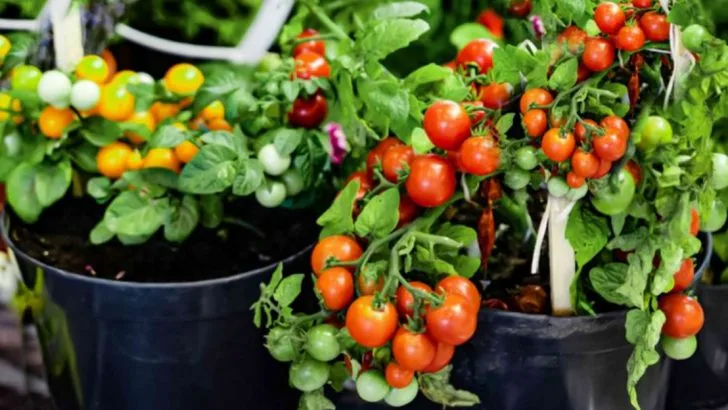Cherry tomatoes don’t care about your Pinterest board. They won’t thrive just because you bought cute pots and whispered sweet nothings at sunrise. These little divas want what they want—sun, space, and a little know-how that most people get wrong. Growing them in containers sounds easy—until your plant becomes a tangled jungle with two tomatoes and a dream. Or worse, a crispy twig with trust issues. But don’t worry, this isn’t your average garden fluff. These tips are real, tested, and actually work—whether you’re on a balcony, fire escape, or backyard patio pretending to be Italian. Get ready to stop guessing and start harvesting. Your snack-sized tomato empire begins now.
Choose the Right Pot
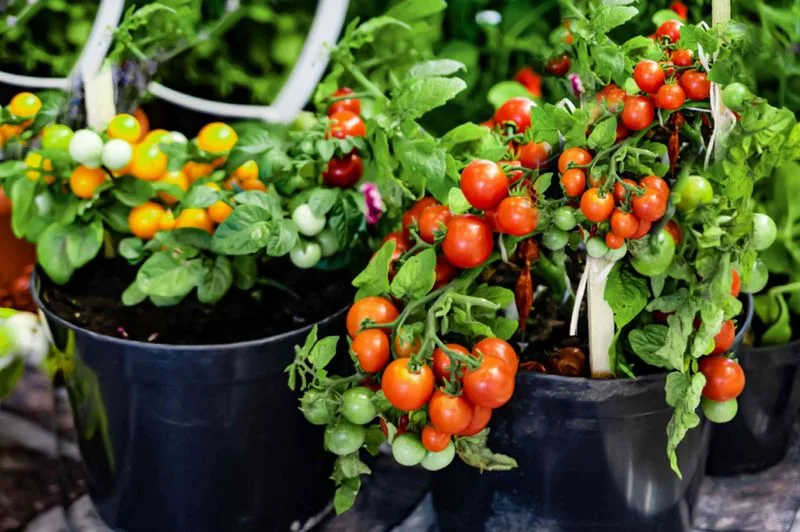
Selecting the right pot is crucial for growing cherry tomatoes. Aim for a container that is at least 16 inches in diameter to provide ample space for root growth. Consider materials like ceramic or plastic, which retain moisture well. Ensure proper drainage by selecting pots with holes at the bottom. This helps prevent waterlogging, a common issue leading to root rot.
Choose a pot color that suits your garden’s aesthetics, but remember, darker colors absorb more heat. This can be beneficial in cooler climates, aiding plant growth during cool nights.
Quality Potting Mix
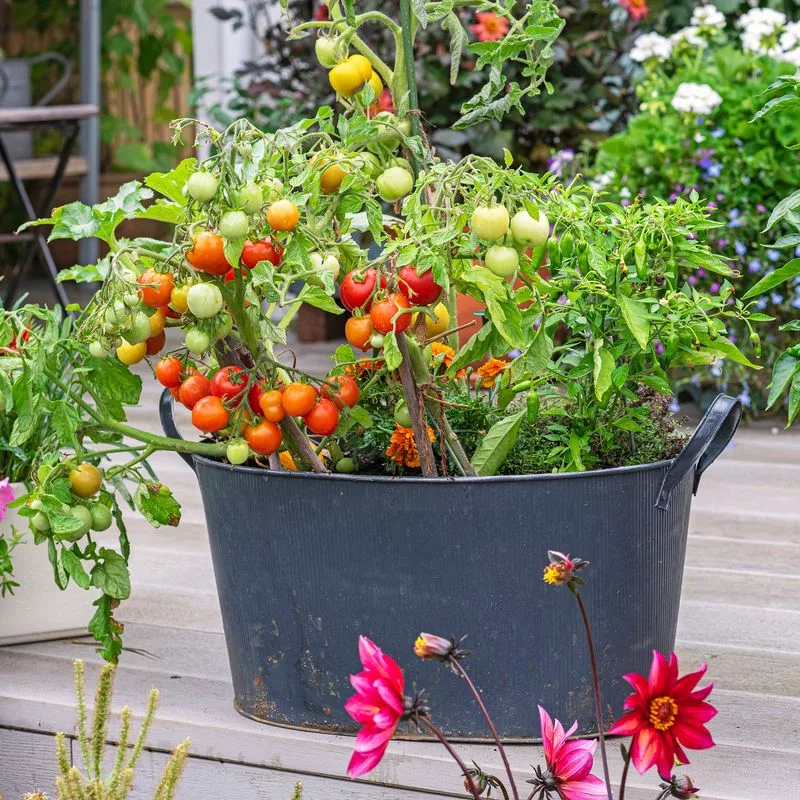
A robust potting mix is the foundation of healthy cherry tomatoes. Opt for a blend rich in organic matter, with perlite or vermiculite for improved aeration and drainage. Avoid using garden soil as it compacts easily and may carry pests.
Look for mixes labeled as ‘vegetable garden’ or specifically for tomatoes. Mixing in some slow-release fertilizers can give your tomatoes a head start. Keep the mix loose and fluffy, ensuring roots can spread easily, vital for plant health.
Remember, a well-prepared potting mix can significantly impact your harvest quality.
Optimal Sunlight
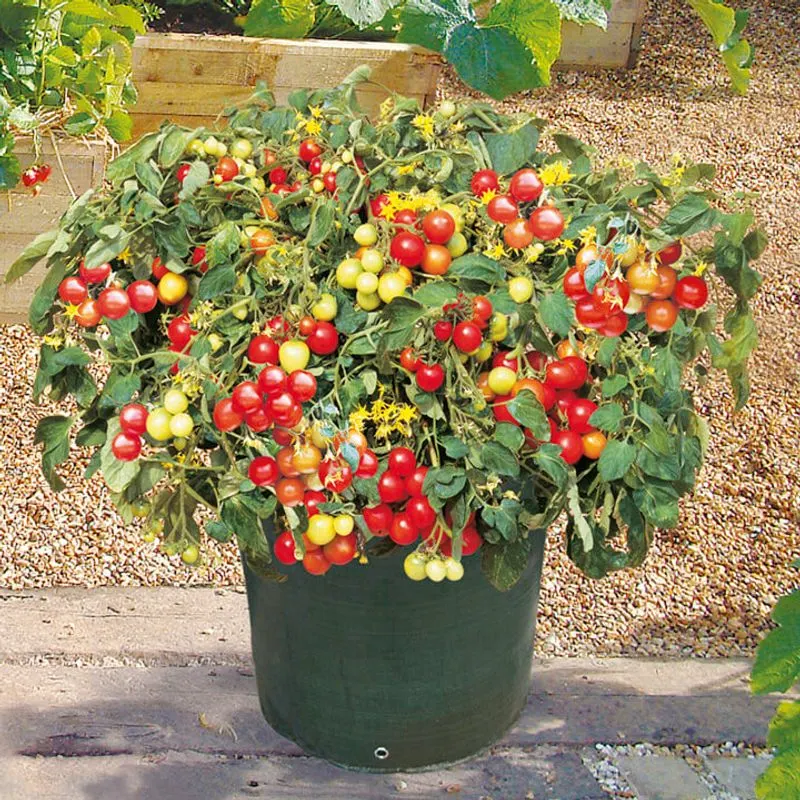
Cherry tomatoes thrive in sunlight, needing about 6-8 hours of direct sun daily. Position your pots in a location that captures maximum sunlight. Consider using a sun dial or sun calculator app to track sunlight exposure on your patio.
If full sun location is unavailable, supplement with grow lights, especially in areas with less natural light. Morning sun is particularly beneficial as it helps dry dew and reduces disease risk.
Ensure consistent sunlight exposure to encourage flower and fruit production, key to a successful cherry tomato harvest.
Watering Techniques
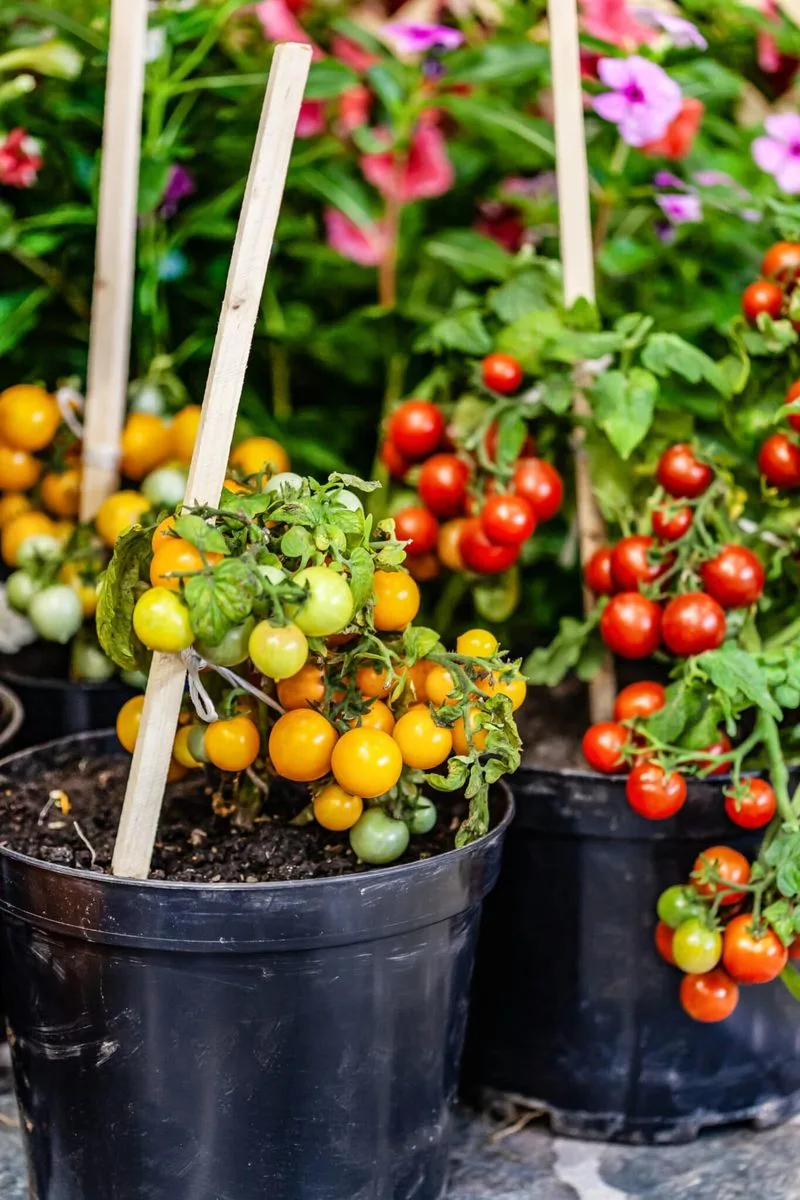
Watering cherry tomatoes correctly is essential. Consistent moisture is key, but avoid overwatering to prevent root rot. Check the soil moisture by sticking a finger 1-2 inches deep; water if it feels dry.
Morning is the best time to water, allowing excess moisture to evaporate under the sun. Consider drip irrigation systems for convenience and efficiency, reducing the risk of fungal issues.
Mulch can help retain soil moisture. Remember, proper watering techniques can significantly improve plant health and fruit quality.
Support Structures
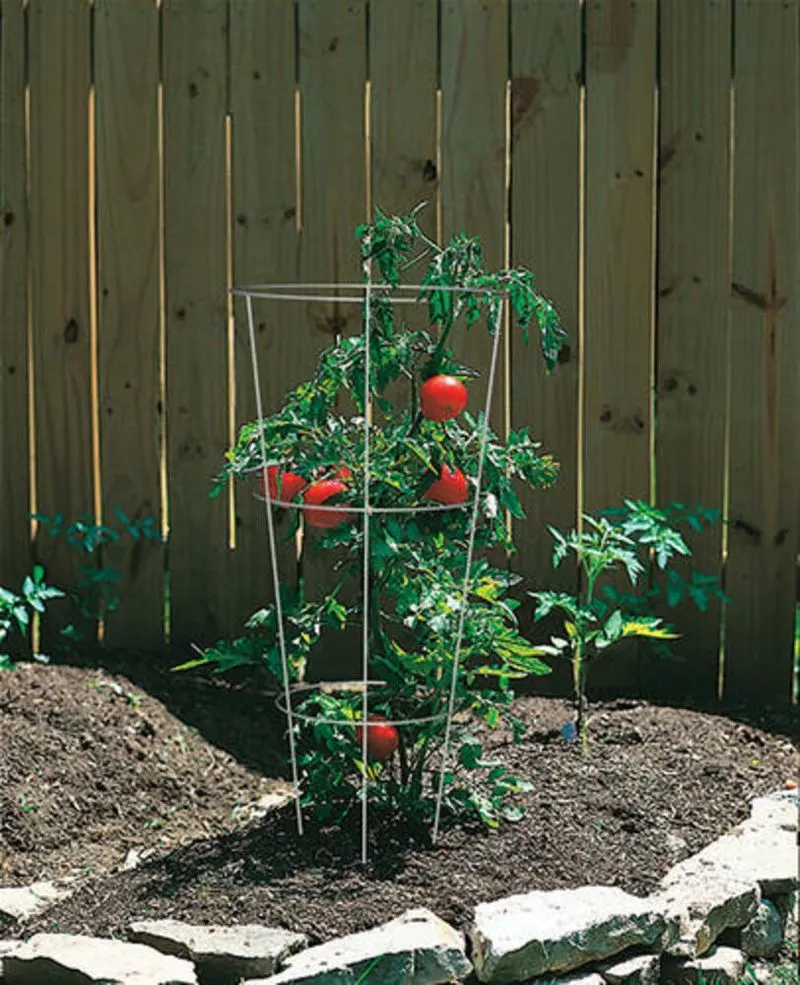
Provide support to your cherry tomato plants with cages or stakes. As plants grow, they need structure to keep them upright and prevent stem breakage. Metal cages are popular for their durability.
Insert supports when planting to avoid disturbing roots later. Tie stems gently with garden ties, allowing room for growth.
Proper support not only prevents damage but also improves air circulation, reducing disease risk. Well-supported plants also make harvesting easier, a crucial aspect of managing cherry tomatoes in pots.
Pruning and Pinching
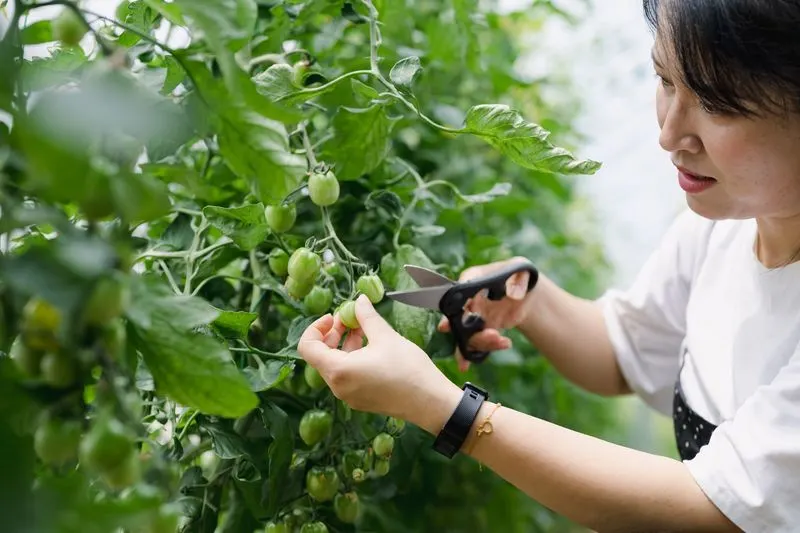
Pruning cherry tomatoes enhances airflow and encourages fruit production. Regularly remove yellowing leaves and suckers—small shoots that develop between the main stem and branches.
Use clean, sharp scissors to avoid plant damage. Focus on the lower parts of the plant where airflow is most critical.
Pinching off the tops of plants late in the season redirects energy to fruit ripening, maximizing yield. Pruning requires consistency but rewards the gardener with healthier, more productive plants.
Fertilization
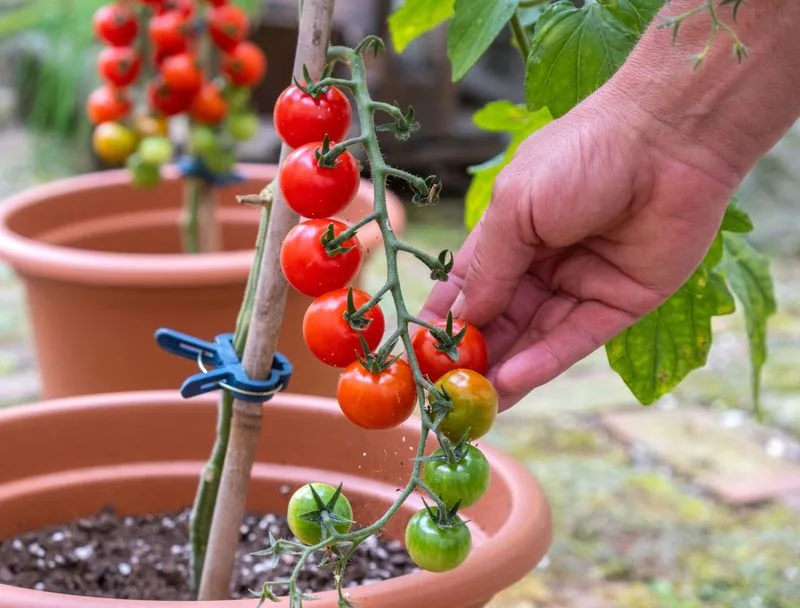
Fertilization is key to growing robust cherry tomatoes. Use a balanced liquid fertilizer every 2-3 weeks. Choose formulations high in phosphorus and potassium to promote flowering and fruiting.
Granular fertilizers can also be effective when mixed into the soil at planting. Avoid over-fertilizing; it leads to lush foliage but fewer fruits.
Monitor plant response and adjust as needed. Healthy nutrition results in vigorous growth and bountiful harvests, essential for container-grown tomatoes.
Pest and Disease Management
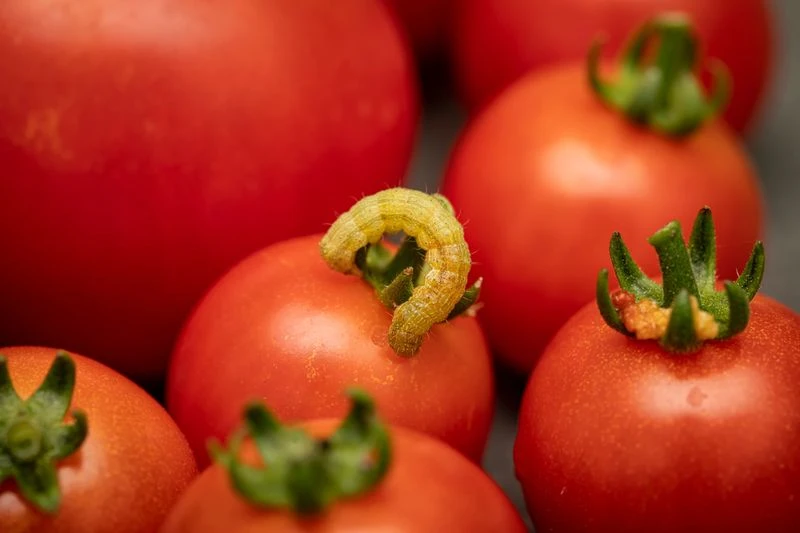
Managing pests and diseases is vital for successful cherry tomato cultivation. Start with regular inspections to catch issues early. Aphids and whiteflies are common pests; neem oil is an effective organic solution.
Fungal diseases can be deterred by proper spacing and airflow. Remove infected leaves promptly to prevent spread.
Companion planting with marigolds can naturally reduce pest populations. Keeping plants healthy and stress-free is the best defense against common garden threats.
Temperature Control
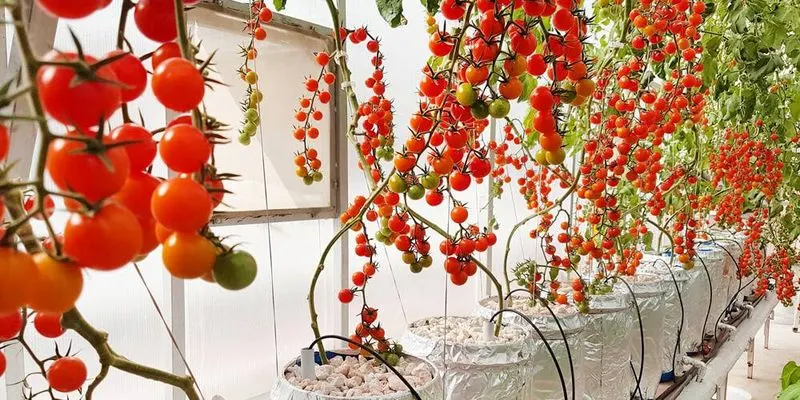
Temperature plays a crucial role in cherry tomato development. Ideal growth occurs between 70-85°F. Provide shade during extreme heat to prevent sunscald and stress.
Conversely, protect plants from cold spells with row covers or by moving pots indoors. Monitoring weather forecasts can help in timely adjustments.
Consistent temperature control ensures steady growth and fruiting, key to maximizing tomato yield in pots.
Pollination Assistance
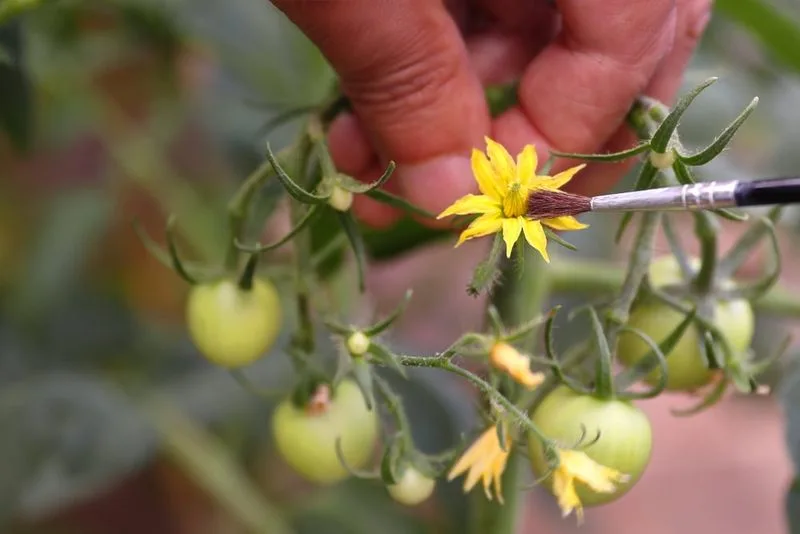
Cherry tomatoes often require assistance with pollination, especially in indoor or low-wind environments. Gently shaking plants can simulate wind, aiding pollen transfer.
Insect activity can also be encouraged. Bees and other pollinators naturally boost fruit set. Plant flowers nearby to attract beneficial insects.
Manual pollination using a soft brush can also be effective. Ensuring adequate pollination leads to higher yields, making it a crucial practice for container gardening.
Harvesting
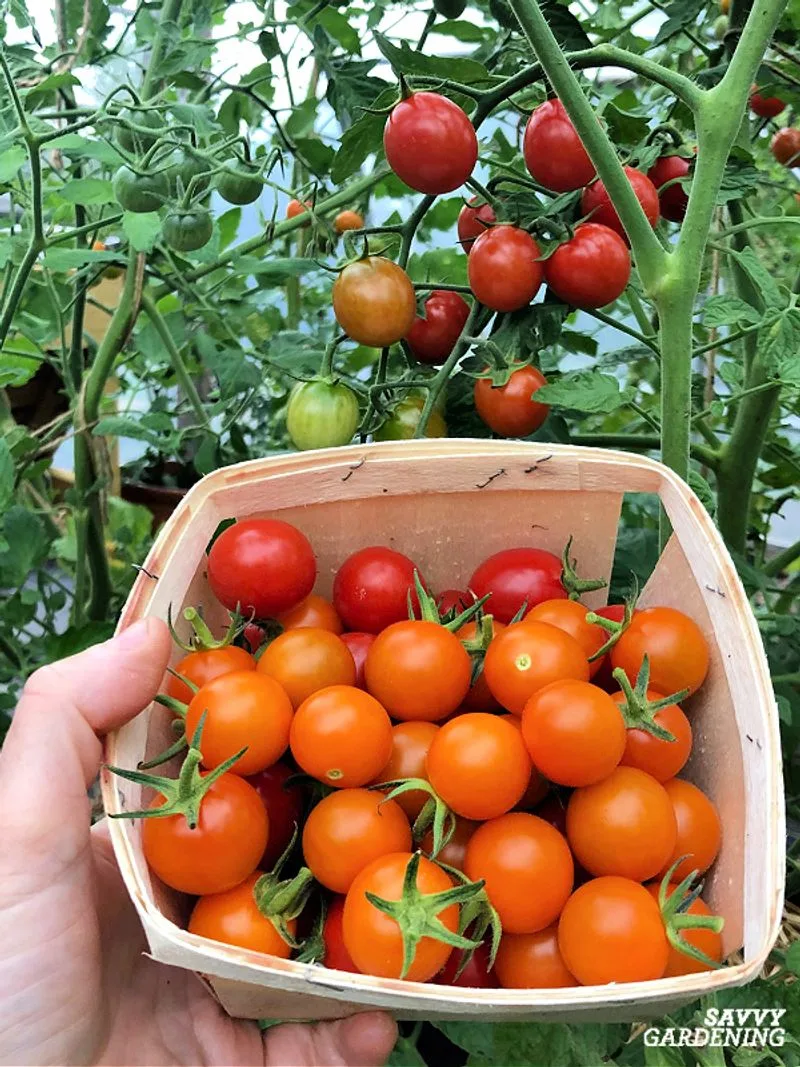
Timely harvesting is essential for flavor and plant productivity. Pick tomatoes when they are fully colored and slightly firm for the best taste.
Frequent harvesting encourages more fruit production. Use a gentle twist to remove tomatoes without damaging the plant.
Store harvested tomatoes at room temperature to maintain flavor. Proper harvesting techniques ensure continual production, a critical factor in successful container gardening.
Season Extension
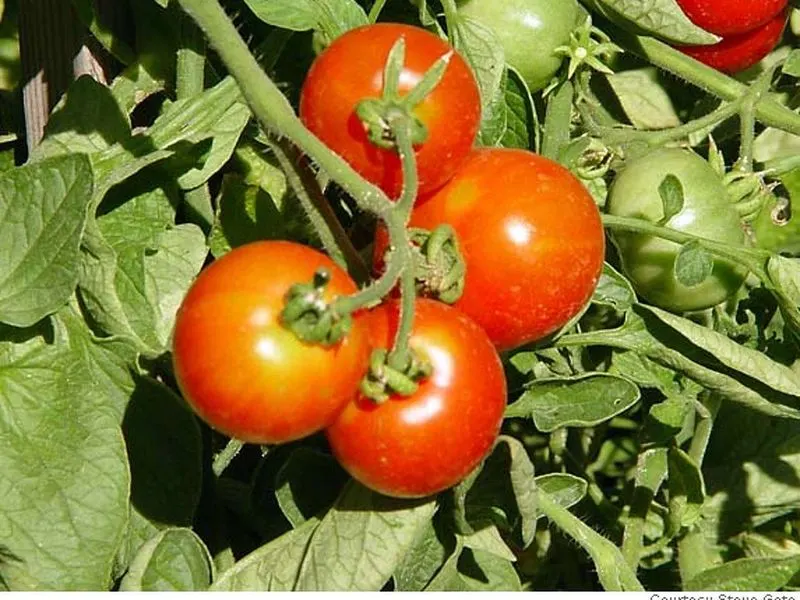
Extending the growing season allows for more harvests. Use greenhouses or cold frames to protect plants from cooler temperatures.
Row covers and cloches can also be effective, especially during early spring or late fall frosts. These extend the harvest period by creating a microclimate.
Experiment with different methods to find what works best for your climate. Season extension is an invaluable technique for maximizing yields from cherry tomatoes in pots.
Variety Selection
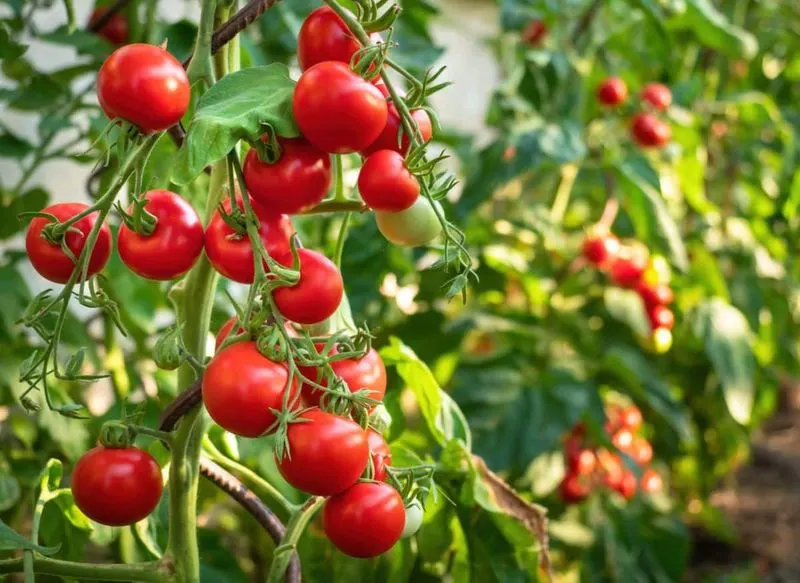
Choosing the right cherry tomato variety can enhance your container gardening experience. Look for varieties bred for pots, like ‘Tiny Tim’ or ‘Patio Princess.’
Consider flavor profiles and resistance to common diseases. ‘Sungold’ and ‘Sweet 100’ are popular for their sweetness and prolific nature.
Experiment with heirloom varieties for unique tastes and colors. The right variety choice makes a significant difference in your gardening success, offering diversity in your harvest.
Rotation and Soil Renewal
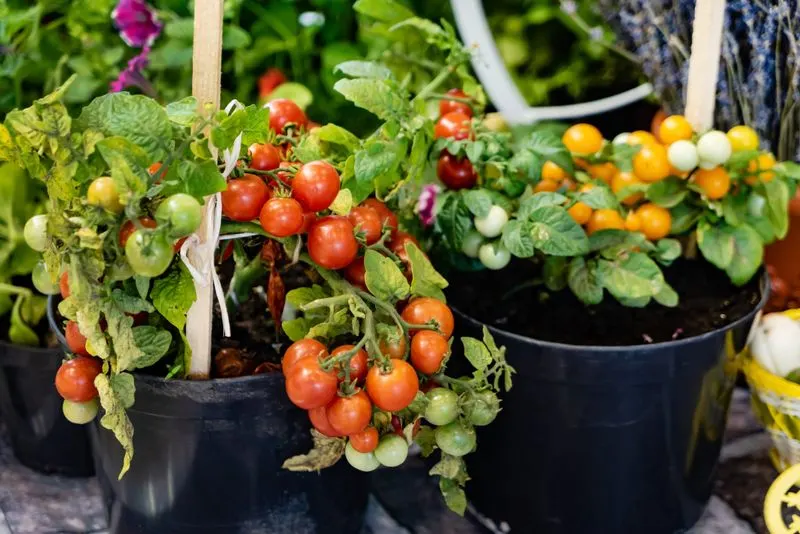
Rotating pots and renewing soil each season are vital practices. Avoid planting tomatoes in the same soil consecutively to prevent disease buildup.
Refresh the potting mix annually to replenish nutrients. This prevents soil fatigue and maintains plant health.
Rotate pots to different areas of your garden to optimize sun exposure and airflow. These practices are essential for sustained productivity and healthy cherry tomatoes in containers.

